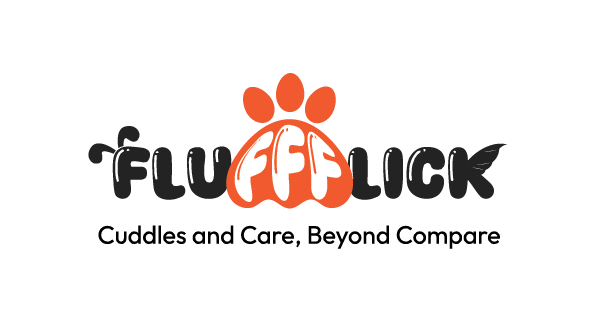Choosing the right diet for your cat is essential for their overall health and well-being. Both wet and dry cat foods have their unique benefits, and understanding their differences can help you make the best choice for your feline friend. This article will explore the pros and cons of wet and dry cat food, feeding guidelines for overweight cats, the best feeding schedule for kittens, and more.
1. Weight Management with Wet and Dry Cat Food
Obesity is a common issue in cats and can lead to various health problems, including diabetes, arthritis, and heart disease. Managing your cat’s weight requires a careful balance of diet and exercise.
a. Wet Food for Weight Management
- Lower Calorie Density: Wet food typically contains fewer calories per serving compared to dry food, which helps in weight control.
- Increased Satiety: The high moisture content in wet food makes cats feel fuller with fewer calories, reducing the chances of overeating.
- Portion Control: Wet food is often pre-portioned in cans or pouches, making it easier to control portion sizes.
b. Dry Food for Weight Management
- Caloric Control: Measure dry food portions carefully using a kitchen scale to prevent overfeeding, as dry food is calorie-dense.
- Feeding Aids: Use puzzle feeders or treat balls to slow down eating and increase mental stimulation.
2. Feeding Guidelines for Overweight Cats
If your cat is overweight, it’s important to adjust their diet and feeding routine to promote healthy weight loss.
a. Calculate Daily Calorie Needs
- Consult your veterinarian to determine your cat’s ideal weight and daily caloric intake based on their activity level, age, and health status.
b. Controlled Portions
- Divide the daily calorie allowance into small, measured meals. For example, feed two or three smaller meals instead of one large meal to keep your cat satisfied throughout the day.
c. Choose the Right Food
- Look for foods labelled as “weight management” or “light” that are lower in calories and higher in protein. Protein helps maintain muscle mass while losing fat.
d. Monitor Weight and Adjust Diet
- Regularly weigh your cat to track progress and adjust their food portions as necessary. Aim for gradual weight loss, around 1-2% of their body weight per week.
3. Best Feeding Schedule for Kittens
Kittens have different nutritional needs compared to adult cats, as they are growing rapidly and require more frequent meals.
a. Feeding Schedule
- 0-4 Weeks: Kittens should nurse from their mother. If not possible, use a kitten milk replacer.
- 4-8 Weeks: Begin introducing wet kitten food mixed with water or kitten milk replacer. Feed 4-5 times a day.
- 8-16 Weeks: Transition to feeding high-quality wet or dry kitten food 3-4 times a day.
- 16 Weeks and Older: Feed 3 times a day until the kitten is 6 months old, then switch to 2 meals a day.
b. Wet Food for Kittens
- Wet food is easier for kittens to chew and digest. It also provides the moisture they need to stay hydrated, as kittens may not drink enough water.
4. Does Dry Food Help with Cat Dental Health?
Dry food is often recommended for dental health, but its effectiveness in preventing dental disease is debatable.
a. Pros of Dry Food for Dental Health
- Crunchy Texture: Chewing on dry kibble can help scrape off plaque and tartar buildup to some extent.
- Dental Formulas: Some dry foods are specifically formulated to promote dental health with larger, textured kibbles and added enzymes.
b. Limitations
- Minimal Impact: The chewing motion may not be enough to prevent dental issues entirely. Cats tend to swallow dry food whole, which reduces the scraping effect.
- Additional Care Needed: Regular tooth brushing and professional dental cleanings are necessary for optimal dental health.
5. Benefits of Wet Food for Cats
Wet food has several benefits that make it a preferred choice for many cat owners.
a. High Moisture Content
- Cats are not naturally inclined to drink water, so the high moisture content in wet food helps keep them hydrated, which is crucial for kidney and urinary health.
b. Palatability
- Wet food is often more appealing to cats due to its taste, texture, and aroma. It can be particularly helpful for picky eaters or cats with decreased appetite.
c. Weight Control
- The high water content helps cats feel fuller while consuming fewer calories, making it beneficial for weight management.
d. Better for Senior Cats
- Older cats with dental issues or reduced appetite often prefer the softer texture of wet food.
6. Dry Cat Food Feeding Recommendations
Dry cat food can be a convenient and affordable option, but it requires proper management to ensure your cat gets the right nutrition.
a. Choose High-Quality Food
- Look for dry foods with high-quality animal proteins listed as the first ingredient, with minimal fillers like corn and soy.
b. Controlled Portions
- Measure each meal to avoid overfeeding. Use a digital scale for accuracy, as it’s easy to overestimate by volume.
c. Store Properly
- Store dry food in a cool, dry place in an airtight container to maintain its freshness and prevent contamination.
d. Combine with Wet Food
- Consider combining dry food with wet food to provide variety, additional moisture, and a balanced diet.
Conclusion
Choosing between wet and dry food for your cat depends on their individual needs and preferences. Wet food is beneficial for hydration and weight management, while dry food offers convenience and can aid in dental health. For the best results, consult your veterinarian to create a feeding plan tailored to your cat’s specific health requirements, age, and lifestyle.

